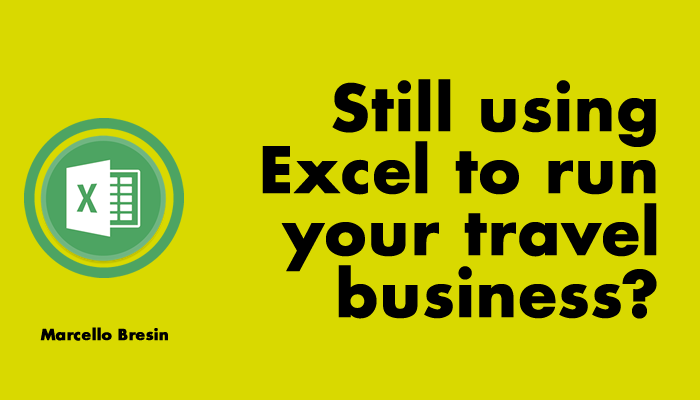Can’t get rid of the telex and Palm Pilot, either?
Ours is a fast-changing world, new technologies are spawn overnight and nobody can keep up with the daily information waterfall. But that’s no reason to restrain from adopting newer, more efficient and cost-effective tools.
Spreadsheets are great for simple row/column numeric calculations, but when it comes to proper data analysis, it is like expecting a donkey to perform at the hippodrome.
Need a few examples? See below:
- Stop Using Excel, Finance Chiefs Tell Staffs
- Attention All Excel Spreadsheet Ninjas: You’re Doing It Wrong!
Business2Community – Helene Clary >>
- 11 Reasons Why You Need to Stop Using Excel to Manage Your Assets
Perhaps you need an example closer to your environment. How about this one?
- Stop Using Excel: The Benefits of a Revenue Management System
Duetto – Best Hotel RM system in the market
(download this brilliant whitepaper here >>)
Nothing against a wonderful tool that helped us for decades, I still use it and love it. But it fells short if you need to get detailed insights, really accurate predictions and, above all, connect several data sources.
Allow me to explain in simple terms why you’re relying too much on an obsolete instrument. A spreadsheet contains data in one single dimension, even if it has many pages interconnected through references and ranges. Think of dates, names, addresses for each one of your markets. You can even relate two or more spreadsheets, again through ranges and individual sheets (not a simple task), but then you’ll have bi-dimensional analysis at most. For instance, combining the sales calculations with the clients’ data, in order to get regional/country sales reports. But if you want to intertwine bookings data with all the above, aiming to know which segment is the most profitable, perhaps looking for dependable estimates for next season? Either you spend days working out many spreadsheets, or you employ a relational database for faster, tridimensional analysis.
No, wait… There’s an even simpler way to explain all that. Which of the following images gives you more information at first sight?
This?
Or this one?
You could do something like that in Excel too, a hardcore fan would argue. True, graphically it can be done with a simple dataset (definitely not an easy task); however, the dashboard above shows analytics from two different databases (each containing about ten spreadsheets) plus a live connection to a booking engine which simultaneously manages five currencies (from providers and customers alike). How about doing that in Excel?
Conclusion
Think of your spreadsheet reports as images from a movie… If a picture is worth a thousand words, how many words does the whole movie contain? Excel and similar products are and will always be an excellent resource for numerical processing, but heavy-duty data crunching (especially large amounts of data) is out of their league. If you rely on several spreadsheets to measure how your business is doing, please be aware that you’re not seeing the big picture, but rather fractions of it, like pieces of a puzzle. To take better actionable decisions based on data, you need to move from simple reporting to visual insights, as the human brain has a natural ability to spot visual patterns quickly, revealing opportunities and eureka moments alike.
As it is, measuring current business performance is not enough: you’d want to have an accurate idea of future trends, whatever can be expected in the weeks or months to come. To that avail, you must include ALL your data sources in the analysis, not just financial or booking data: website traffic, social media interactions, fleet management, human resources, marketing automation… everything!
You should see by now that such a task would be impossible in Excel, mainly because you can’t pose questions to it…. Let’s leave it at that, a subject for a whole new article. If I caught your attention, have a look at REVVA, a simple to use tool (orders of magnitude simpler than Excel) that will bring you all the above and much more.
Thanks for reading!
Marcello Bresin



